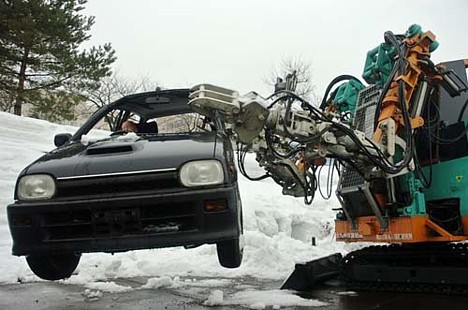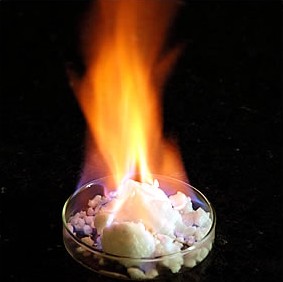 Outcrops of combustible ice, or methane hydrate (also known as methane ice or methane clathrate), which many view as a potential source of fuel in the future, have been discovered on the ocean floor near the coastal city of Joetsu in Niigata prefecture. According to a statement made by scientists on February 20, the methane hydrate appears to be the exposed tips of ice columns that extend about 100 meters (325 feet) beneath the ocean floor.
Outcrops of combustible ice, or methane hydrate (also known as methane ice or methane clathrate), which many view as a potential source of fuel in the future, have been discovered on the ocean floor near the coastal city of Joetsu in Niigata prefecture. According to a statement made by scientists on February 20, the methane hydrate appears to be the exposed tips of ice columns that extend about 100 meters (325 feet) beneath the ocean floor.
The recent discovery marks the first time that exposed methane hydrate deposits have been found in Japanese waters. Methane hydrate, which is normally found several hundred meters beneath the ocean floor, is a sherbert-like substance that burns when exposed to flame. It forms when low temperature and high pressure under the ocean floor causes methane molecules to become trapped inside frozen water molecules.
Scientists from the University of Tokyo, the Japan Agency for Marine-Earth Science and Technology (JAMSTEC), and the National Institute of Advanced Industrial Science and Technology (AIST) are working together to collect samples from two points located at depths of 800 to 1000 meters (2600 to 3300 feet), about 30 kilometers (19 miles) offshore. They are using unmanned submarines to collect the ice. Based on the high electrical conductivity of the ground beneath the ocean floor, the scientists suspect the existence of large underground columns of methane hydrate.
While methane hydrate is being hailed as a potential source of fuel in the future, methane is a greenhouse gas. Methane is generated when organic matter in deep layers of sedimentary rock breaks down due to heating. The methane moves into upper layers, where it accumulates and forms methane hydrate. As the temperature rises and pressure falls, methane hydrate dissociates into methane and water. The resulting methane concentration in the surrounding seawater ranges from dozens to thousands of times higher than normal.
The research group is also committed to exploring the impact that the use of methane hydrate will have on global warming.
[Source: Asahi Shimbun]

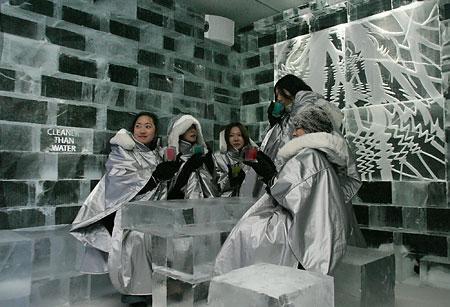

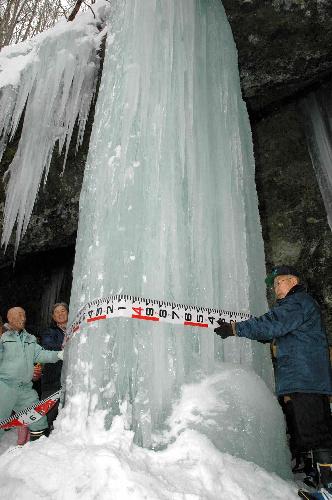 In a tradition that stretches back 700 years, local farmers in Hanamaki, Iwate prefecture measure the circumference of the frozen waterfall at Taroshi Falls to predict the yield of the year's rice crop.
In a tradition that stretches back 700 years, local farmers in Hanamaki, Iwate prefecture measure the circumference of the frozen waterfall at Taroshi Falls to predict the yield of the year's rice crop.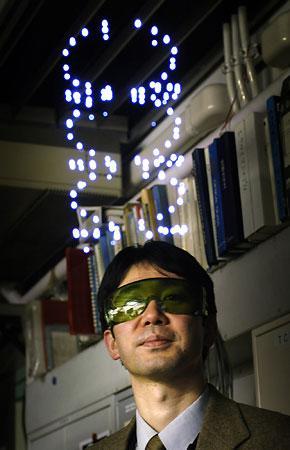 Japan's National Institute of Advanced Industrial Science and Technology (
Japan's National Institute of Advanced Industrial Science and Technology (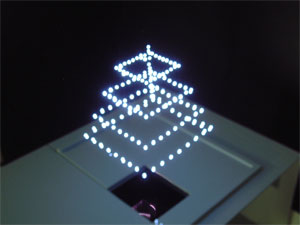 At the demonstration, bursts of laser light were emitted 100 times per second to form shapes in the air up to 50 cm above the device. Heat from the laser caused the air to expand, producing a crackling sound that resembled a series of tiny explosions.
At the demonstration, bursts of laser light were emitted 100 times per second to form shapes in the air up to 50 cm above the device. Heat from the laser caused the air to expand, producing a crackling sound that resembled a series of tiny explosions. A daikon radish with a distinctly human shape is the talk of the town in Sasamicho, Wakayama prefecture.
A daikon radish with a distinctly human shape is the talk of the town in Sasamicho, Wakayama prefecture.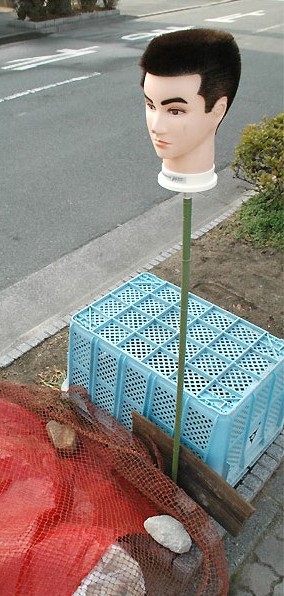 A recycled hairstyling mannequin head has been called upon to keep crows away from a garbage collection point in Ube, Japan.
A recycled hairstyling mannequin head has been called upon to keep crows away from a garbage collection point in Ube, Japan.